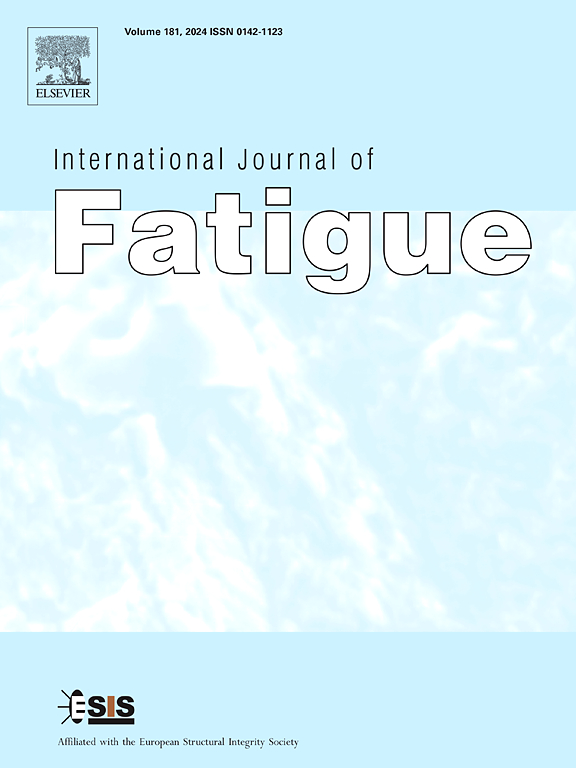On the fatigue design strength of steel butt welded joints: Size and geometrical effects
IF 6.8
2区 材料科学
Q1 ENGINEERING, MECHANICAL
引用次数: 0
Abstract
This paper addresses the issue of the influence of geometry and size on the fatigue strength of steel butt weld joints. It aims to develop a series of continuously defined influencing factors, similar to the stress concentration factors in conventional un-welded notches. Such coefficients are mainly based on theoretical outcomes from Fracture Mechanics and Notch Mechanics and, where necessary, they are defined by the extensive use of parametrical numerical investigations. The relationship between stress raising factors and strength assessment reduction is explored by using local stress approaches as well as Notch Stress Intensity Factors and local effective stress.
The main result is a clear definition of the size effect related to the dimensions and opening angle. Further secondary factors are investigated: bead shape, thickness over bead dimension ratio and toe radius.
钢对接焊接接头的疲劳设计强度:尺寸和几何效应
本文研究了几何形状和尺寸对钢对接焊缝疲劳强度的影响。其目的是开发一系列连续定义的影响因素,类似于传统未焊接缺口的应力集中因素。这些系数主要基于断裂力学和缺口力学的理论结果,必要时,它们是通过广泛使用参数化数值研究来定义的。利用局部应力方法、缺口应力强度因子和局部有效应力,探讨了应力提升因子与强度评估折减之间的关系。主要结果是明确定义了与尺寸和开口角相关的尺寸效应。进一步研究次要因素:球头形状、厚度/球头尺寸比和脚趾半径。
本文章由计算机程序翻译,如有差异,请以英文原文为准。
求助全文
约1分钟内获得全文
求助全文
来源期刊

International Journal of Fatigue
工程技术-材料科学:综合
CiteScore
10.70
自引率
21.70%
发文量
619
审稿时长
58 days
期刊介绍:
Typical subjects discussed in International Journal of Fatigue address:
Novel fatigue testing and characterization methods (new kinds of fatigue tests, critical evaluation of existing methods, in situ measurement of fatigue degradation, non-contact field measurements)
Multiaxial fatigue and complex loading effects of materials and structures, exploring state-of-the-art concepts in degradation under cyclic loading
Fatigue in the very high cycle regime, including failure mode transitions from surface to subsurface, effects of surface treatment, processing, and loading conditions
Modeling (including degradation processes and related driving forces, multiscale/multi-resolution methods, computational hierarchical and concurrent methods for coupled component and material responses, novel methods for notch root analysis, fracture mechanics, damage mechanics, crack growth kinetics, life prediction and durability, and prediction of stochastic fatigue behavior reflecting microstructure and service conditions)
Models for early stages of fatigue crack formation and growth that explicitly consider microstructure and relevant materials science aspects
Understanding the influence or manufacturing and processing route on fatigue degradation, and embedding this understanding in more predictive schemes for mitigation and design against fatigue
Prognosis and damage state awareness (including sensors, monitoring, methodology, interactive control, accelerated methods, data interpretation)
Applications of technologies associated with fatigue and their implications for structural integrity and reliability. This includes issues related to design, operation and maintenance, i.e., life cycle engineering
Smart materials and structures that can sense and mitigate fatigue degradation
Fatigue of devices and structures at small scales, including effects of process route and surfaces/interfaces.
 求助内容:
求助内容: 应助结果提醒方式:
应助结果提醒方式:


